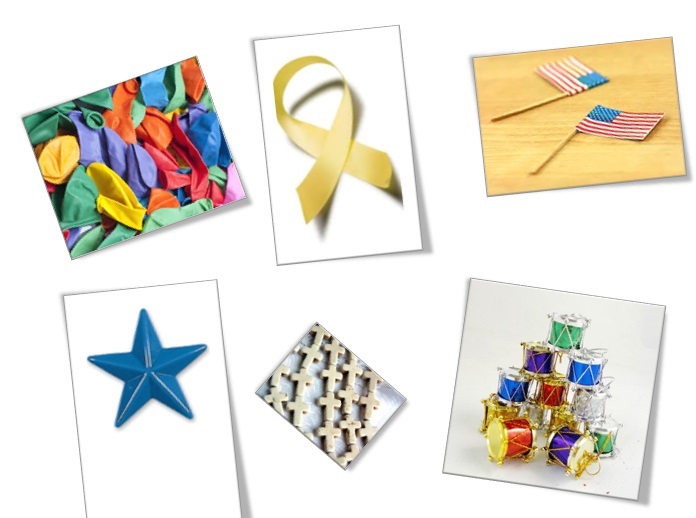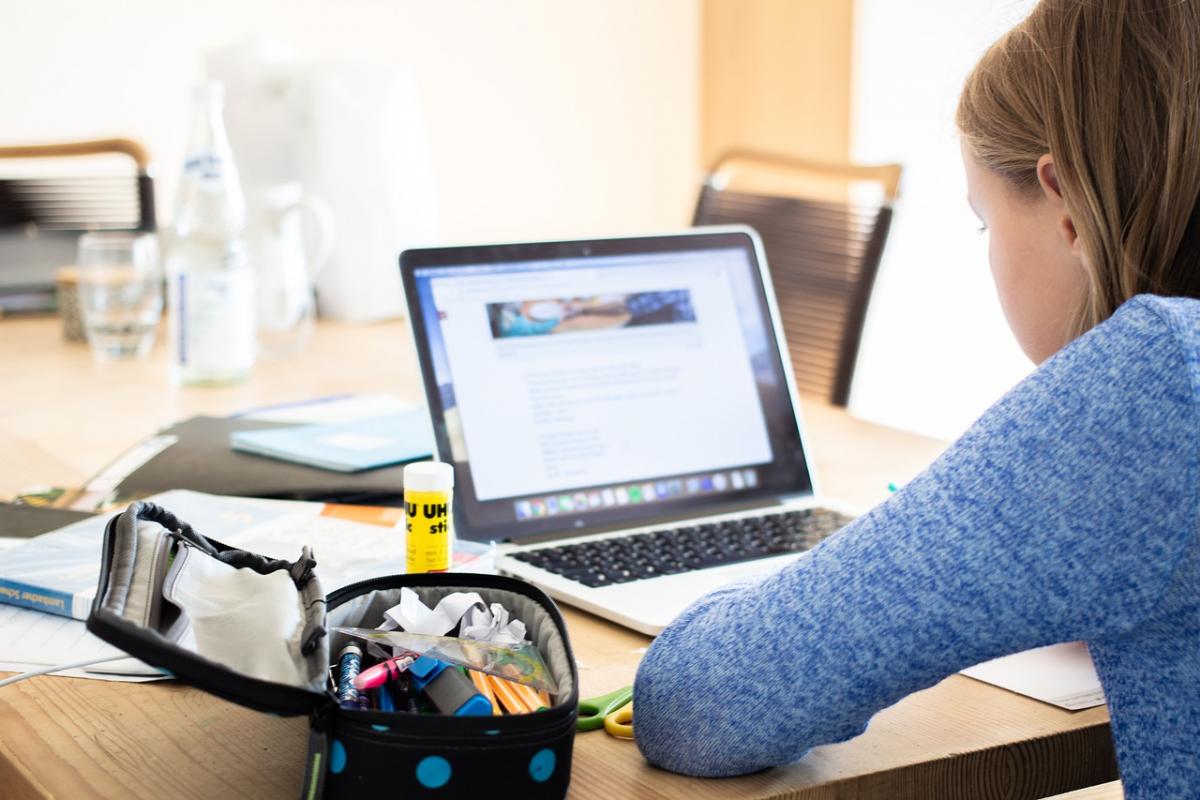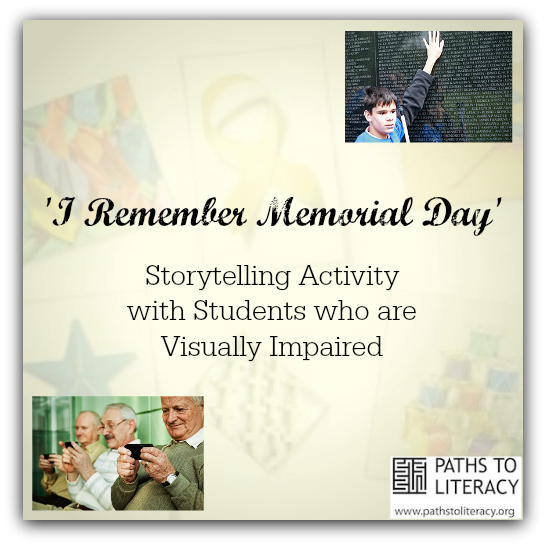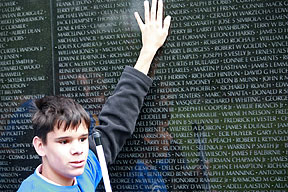“I Remember Memorial Day”

Older students will enjoy this storytelling activity discussing Memorial Day with a senior in their lives.
Few young people in the United States have a direct relationship with service members, with less than 1% of the American population actively serving in military roles. For our generation of elders, military service was an expected part of adulthood. Grandparents, Aunts, and Uncles from their 50s to 90s have vivid memories of life during wartime.
Commemorate Memorial Day with your children and students by having them learn first-hand about Memorial Days past. (Instructions are written in the second person, to the student. Advanced instructions for collaborative activities are included as well)
Memorial Day in America's Past
How do your friends and family celebrate Memorial Day? Usually the weather is warm and school is nearly finished. It's great to have a day off! Many families have a picnic, go to a town parade, or a drive in the country. Maybe where you live, it is already warm enough for the beaches and pools to open!
Memorial Day is the day we set aside to remember troops we have lost in war, throughout American history. Have you ever asked older people in your life, such as your grandparents, godparents, teacher, or neighbor, what Memorial Day was like when they were your age? Here are some ideas for turning a fun conversation into an interesting writing and research project.
1. Ask a family member or friend to talk about their Memorial Day Memories.

Do you know anyone who is more than 50 years old? Maybe you have an uncle or aunt, a godparent or grandparent, or a neighbor, minister, or teacher you like to talk with. Ask them what they remember about Memorial Day years ago.
Here are some questions you can ask to help them remember:
- Where did you live when you were my age?
- What were you like?
- Do you remember Memorial Day Celebrations? What did you do?
- Tell me about a Memorial Day you remember really well. What makes it such a strong memory?
You can take notes while they talk, or record them on audio or video. Listen for things that make you want to know more, and ask questions about them. When you hear words or ideas that are new, ask your friend to explain.
You might enjoy using library and Internet resources to research more about the things you talk about.
2. Write a summary of one of their stories.
- From your interview notes, retell one of the memories in a paragraph or two, as the beginning of an essay. Imagine that your reader s have never met your friend, and include details that will explain who they are and when their memory takes place.
- If you are a braille reader, try writing your story in braille! You may have to use your favorite spell check program or a dictionary to check the spelling and syllable breaks of new words you'd like to use.
3. Think about how your friend's story compares with your own Memorial Day.
- How is your friend's memory like your own Memorial Day memories? How is it different?
- What did you hear about that you had never heard of before? Is it something you would like to do?
- What did your friend remember that you had heard of in books in movies?
- Imagine you lived in the time and place your friend recalls. What do you think you would have been like?
4. Write a summary of your thoughts.
Continue the essay you began in Step 2 with your thoughts about your friend's memories.
5. Share your reflections.
Share your essay with your class or family by reading your papers aloud.

Collaborative classroom ideas for teachers
- Have class members exchange papers and practice reading material they did not create.
- Use the collected essays to make a class project of Memorial Day memories, using audio, video, or presentation software.
- Find tactile symbols for the collected memories and bind them together in a book.
- Create monologues out of memory stories and have class members portray characters in a staged performance.
- Braille readers will need their preferred brailling tools.
- Materials for tactile book making include art supplies and small representative objects, tape/glue, and a notebook or other page binders like stables or brads.
- Students may wish to use a note taker or recording device in their interview.
- Interview a subject, preferably a senior citizen, about their Memorial Day Memories
- Structure an essay to compare/contrast the interview subject's experiences with the interviewer's own. Essays can be as long or complex as the students' skill level supports. These instructions suggest 1-2 paragraphs summarizing the senior's memories, and 1-2 paragraphs of the student's own.
- Present essays.
- Students may present orally, submit written papers, collaborate on a class Memory Book, or combinations of all of these. Audio/visual or dramatic presentations, art work/poster projects, poems, tactile books, are all variations on the activity.
- For a class activity, discuss similarities and differences across all the projects. Have students discuss their interview experience, and share tips.
- Standards are identified for 6-12, and may also vary given the skill level and intellectual abilities of individual students or class groups.


